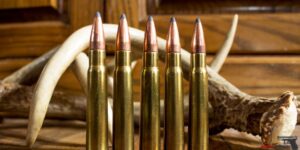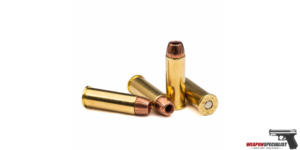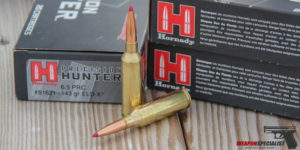The 6.8 SPC and 6.5 Grendel have built their reputation as two of the best rifle cartridges for long-range shooting and multiple functions. Whether it is hunting, shooting competition, or self-defense, they can meet all the requirements.
However, choosing between 6.5 Grendel and 6.8 SPC is not an easy task, especially for beginners. Therefore I write this post to compare and highlight the differences between the 6.8 SPC vs 6.5 Grendel.
Based on the information provided, you can gain more insight into their strengths and weaknesses to make the wisest choice.
Let’s scroll down to read more information!
What is 6.8 SPC Ammo?
The 6.8mm Special Purpose Cartridge (SPC) is a rifle cartridge that was developed in the early 2000s as an improvement over the 5.56mm NATO cartridge used by the US military.
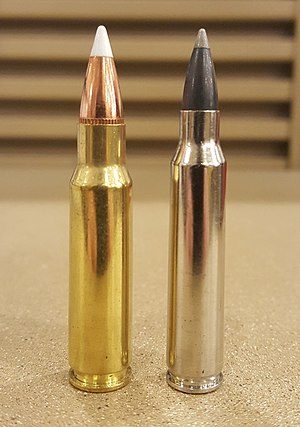
Development and History
The 6.8 SPC (Special Purpose Cartridge) was developed in the early 2000s by a collaboration between the U.S. Army Marksmanship Unit, Remington Arms Company, and members of the Special Operations community.
The goal was to create a cartridge that would provide better stopping power and penetration at longer ranges than the 5.56mm NATO cartridge used by the U.S. military. The 6.8 SPC was designed to be used in the M16/M4 platform with minimal modifications, making it an attractive option for military and law enforcement applications.
The development of the 6.8 SPC was in response to concerns about the performance of the 5.56mm round in combat situations, particularly in urban environments where longer-range engagements were more common. The 5.56mm round was found to be less effective at stopping enemy combatants than desired, particularly when they were wearing body armor.
The 6.8 SPC was designed to offer improved terminal ballistics, with a larger bullet diameter and higher muzzle energy compared to the 5.56mm round. The 6.8 SPC is also more effective at penetrating barriers such as walls, making it a useful choice for military and law enforcement operations in urban environments.
The 6.8 SPC was introduced in 2004, and initially gained some traction with special operations units and law enforcement agencies. However, it has not been widely adopted by the U.S. military, which continues to primarily use the 5.56mm round. Despite this, the 6.8 SPC has gained a following among civilian hunters and sport shooters due to its superior performance compared to the 5.56mm round.
Design and Features
The 6.8 SPC Ammo was designed to provide better ballistic performance than the 5.56mm NATO cartridge, particularly at longer ranges. Here are some of the design and features of the 6.8 SPC Ammo:
- Cartridge Dimensions: The 6.8 SPC cartridge has a length of 2.26 inches (57.4 mm) and a case diameter of 0.422 inches (10.72 mm).
- Bullet: The 6.8 SPC typically uses a .277-inch diameter bullet, with a weight ranging from 85 to 130 grains.
- Velocity and Muzzle Energy: The 6.8 SPC can achieve muzzle velocities of up to 2,800 feet per second (853 meters per second) and muzzle energy of up to 2,500 foot-pounds (3,390 joules).
- Accuracy: The 6.8 SPC has a reputation for excellent accuracy, even at longer ranges.
- Ballistic Performance: The 6.8 SPC has better penetration and stopping power than the 5.56mm NATO round, particularly at ranges beyond 300 yards. It also experiences less wind drift and has a flatter trajectory than the 5.56mm round.
- Compatibility: The 6.8 SPC can be used in some firearms chambered for the 5.56mm NATO cartridge by changing the barrel, bolt, and magazine, which allows for an easy upgrade path for some rifle platforms.
Applications and Uses
Military and Law Enforcement: The 6.8 SPC has been used by some military and law enforcement units as an alternative to the 5.56mm NATO round. The 6.8 SPC offers better stopping power and penetration at longer ranges, making it suitable for certain applications where the 5.56mm round may not be effective.
Hunting: The 6.8 SPC is popular with hunters for medium-sized game such as deer, hogs, and antelope. Its superior ballistic performance compared to the 5.56mm round makes it more effective at longer ranges and in more challenging conditions.
Sport Shooting: The 6.8 SPC is used in various sport shooting competitions, including 3-gun and long-range shooting matches. Its accuracy, reliability, and consistency make it a popular choice among sport shooters.
Availability and Cost
The availability and cost of 6.8 SPC ammo can vary depending on the manufacturer, retailer, and current market conditions.
In general, 6.8 SPC ammo is not as widely available as more common cartridges such as .223 or .308. However, it can still be found at many gun stores and online retailers.
The cost of 6.8 SPC ammo can also vary widely, depending on factors such as the brand, bullet weight, and quantity purchased. On average, a box of 20 rounds of 6.8 SPC can cost anywhere from $20 to $50 or more, depending on the factors mentioned above. This can make 6.8 SPC more expensive than other common rifle cartridges.
It’s worth noting that because 6.8 SPC is not as widely used as other cartridges, the cost of the firearms themselves chambered in 6.8 SPC can also be higher than firearms chambered in more common cartridges. However, for those who value the improved ballistic performance and stopping power of the 6.8 SPC, the higher cost may be worth it.
What is 6.5 Grendel Ammo?
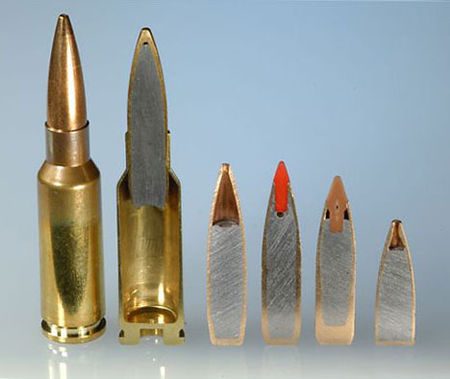
6.5 Grendel ammo is a rifle cartridge that was designed in 2004 by Arne Brennan, Bill Alexander, and Janne Pohjoispää. It was specifically created to address the limitations of the 5.56 NATO cartridge in long-range shooting and hunting situations.
Development and History
The 6.5 Grendel is a relatively new rifle cartridge that was developed in the early 2000s by Alexander Arms. The cartridge was designed to provide long-range performance and accuracy for both military and civilian applications.
The development of the 6.5 Grendel was driven in part by the military’s dissatisfaction with the performance of the 5.56mm NATO cartridge in long-range engagements. The 5.56mm NATO cartridge was designed to be lightweight and easy to carry, but it lacked the range and stopping power needed for engagements at longer ranges. The 6.5 Grendel was designed to address these shortcomings by providing superior long-range accuracy and ballistics.
The 6.5 Grendel cartridge was designed to fit into a standard AR-15 platform, which made it easy for military and civilian users to adopt. The cartridge uses a .264-inch diameter bullet and is typically loaded with bullets weighing between 90 and 130 grains. It has a maximum effective range of around 1,000 yards and is known for its accuracy, low recoil, and high ballistic coefficient.
The 6.5 Grendel cartridge was first introduced in 2004 and has since gained popularity among military and law enforcement agencies, as well as hunters and sport shooters. It is particularly popular among long-range shooters and hunters who require superior accuracy and ballistics at extended ranges.
Today, there are many firearms manufacturers that offer rifles chambered in 6.5 Grendel, and a variety of ammunition manufacturers produce 6.5 Grendel ammo. The popularity of the cartridge continues to grow as more shooters discover its superior long-range performance and accuracy.
Design and Features
The 6.5 Grendel is a rifle cartridge that was designed for use in the AR-15 platform. Here are some of its design and features:
Cartridge dimensions: The 6.5 Grendel has a case length of 1.525 inches, an overall length of 2.26 inches, and a rim diameter of 0.441 inches. It is a bottlenecked cartridge with a shoulder angle of 30 degrees.
Bullet diameter: The 6.5 Grendel uses a .264 inch diameter bullet, which is the same as other 6.5mm cartridges such as the 6.5 Creedmoor and the 6.5×55 Swedish.
Velocity and energy: The 6.5 Grendel typically achieves velocities of around 2,500 to 2,700 feet per second with a 120 grain bullet, and 2,300 to 2,500 feet per second with a 130 grain bullet. It also delivers muzzle energies of around 1,700 to 1,900 foot-pounds.
Accuracy: The 6.5 Grendel is known for its accuracy and long-range capabilities. It has a high ballistic coefficient due to its long, sleek bullets, which helps it retain energy and resist wind drift over long distances.
AR-15 compatibility: The 6.5 Grendel was designed specifically for use in the AR-15 platform, and can be used with a standard AR-15 lower receiver and magazine. However, it requires a different upper receiver, barrel, and bolt carrier group than the standard 5.56mm NATO cartridge.
Hunting and target shooting: The 6.5 Grendel is a popular choice for both hunting and target shooting. It is capable of taking medium-sized game at long ranges, and is often used in precision shooting competitions.
Applications and Uses
Hunting: The 6.5 Grendel is an excellent choice for hunting medium-sized game at extended ranges. Its flat trajectory, high accuracy, and excellent energy retention make it ideal for taking down deer, antelope, and other similar-sized game.
Precision shooting: The 6.5 Grendel has gained popularity in precision shooting competitions. Its high ballistic coefficient and accuracy make it a great choice for long-range shooting competitions.
Military and Law Enforcement: The 6.5 Grendel has been used by some military and law enforcement units as a designated marksman rifle cartridge. Its long-range capabilities and high accuracy make it an ideal choice for engaging targets at extended ranges.
Home Defense: The 6.5 Grendel can also be used for home defense. It is a powerful round that can stop an intruder while also minimizing over-penetration, which could endanger others in the home.
Target Shooting: The 6.5 Grendel is an excellent cartridge for target shooting at extended ranges. Its high accuracy and flat trajectory make it a favorite among target shooters.
Tactical Applications: The 6.5 Grendel is an ideal cartridge for tactical applications. Its long-range capabilities, high accuracy, and excellent energy retention make it perfect for engaging targets at extended ranges.
Availability and Cost
The 6.5 Grendel is a relatively popular cartridge used for hunting, competition shooting, and tactical applications. It was designed to offer long-range accuracy and superior ballistic performance compared to other intermediate cartridges like the 5.56 NATO.
In terms of availability, the 6.5 Grendel may not be as widely available as some other cartridges like the 5.56 NATO or the .308 Winchester, but it can still be found in many gun stores, online retailers, and ammunition suppliers.
Regarding cost, the price of 6.5 Grendel ammunition can vary depending on factors such as the manufacturer, the bullet weight, the quantity, and the store. Generally speaking, 6.5 Grendel ammo tends to be more expensive than 5.56 NATO or .223 Remington due to its specialized nature and superior performance.
It’s always a good idea to shop around and compare prices from different retailers to find the best deal. Additionally, you should always check the laws and regulations in your area regarding the possession and use of firearms and ammunition.
6.8 SPC Vs 6.5 Grendel: What Are The Differences?

The specs and size of a cartridge solely are insufficient to tell its quality and shooting performance. Therefore I have conducted real-life shooting tests with the 6.8 SPC and 6.5 Grendel to fairly assess their performance.
Before moving on to the detailed assessment of the two cartridges, let me walk you through the core differences in their sizes and specs.
Comparison Table
| Features | 6.5 Grendel | 6.8 SPC |
| Bullet Grain | 123 gr | 120 gr |
| Diameter | 0,264 inches (6,7 mm) | 0,277 inches (7 mm) |
| Rim Diameter | 0,438 inches (11,1mm) | 0,422 inches (10,7 mm) |
| Muzzle Velocity | 2,500 fps | 2,400 fps |
| Max Gunpowder Load | 31,2 gr | 25,8 gr |
| Overall Weight | 6.0 lbs | 6.0 lbs |
| Recoil Velocity | 11.04 fps | 9.93 fps |
| Free Recoil Velocity | 11.36 ft-lbs | 9.19 ft-lbs |
| Load Capacity | 35 gr (H2O) | 36 gr (H2O) |
| Maximum Pressure | 52,000 psi | 55,000 psi |
Size And Specs
These cartridges seem relatively similar in size and design, but there are some differences when considering them elaborately. They have the same bullet length at 2.26 inches, matching up with the maximum pellet size of an AR-15.
In general, the 6.8 SPC is longer than the 6.5 Grendel. As they are the later versions of former different cartridge cases, it’s not surprising that these cartridges have different rim diameters.
The 6.8 Sps comes with 422 inches and is shorter than the 6.5 cartridges by about 6 inches. With a higher rim diameter, the 6.8 SPC cartridge can store more gunpowder, though it’s not so considerable.
Another worth considering difference lies in their bullet grain. While the 6.5 Grendel cartridges weigh between 90 grams to 130 grams, the 6.8 SPC only weighs around 75 to 120 gr.
Besides the higher bullet weight, the 6.8 SPC also features higher maximum load pressure of 55,000 psi.
| Cartridge | Bullet Diameter | Case Length | Overall Length |
|---|---|---|---|
| 6.8 SPC | .277 inch | 43 mm | 67.5 mm |
| 6.5 Grendel | .264 inch | 39 mm | 57 mm |
Accuracy
Regarding accuracy, 6.5 Grendel is the winner since many actual shooting tests and the evaluation of many shooters have proven that. The 6.5 Grendel can retain its precision for long-range shooting distance.
From 400 to 500 yards, it performs better with a more stable trajectory and fewer improper twisted rates. However, these cartridges provide users equal fatality and damage in a hunting or shooting competition.
Experienced shooters won’t have any problem handling these cartridges. But the 6.5 Grendel is much more precise and is surely an advantage if you want high-precise shots with high velocity.
Weight
The standard weight of the 6.5 Grendel is around 90 to 130 grains, which is significantly higher than the 6.8 SPC bullet grain. Higher bullet weight leads to higher sectional density, increasing its intactness when hitting the target.
In addition, the 6.8 SPC has more ammo available. The 6.8 SPC offers a wider selection than the other when it also uses 110 to 115 grain Sierra bullets besides other choices between 85 to 120 grain.
The 6.8 cartridge is suitable for anyone who wants more flexible options in ammo usage.
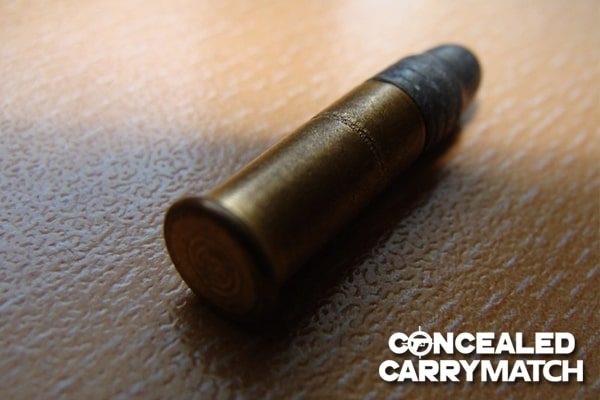
Balance
Clearly, the 6.5 cartridge is the winner flowing to the benefits of high sectional density. This slight storage difference can result in considerable differences in hunting or shooting competition.
The Grendel possesses an optimal velocity when using bullets between 100 and 123 grains. The 6.8 SPC achieves Grendel’s balance between 100 to 120 grains.
The 6.5 Grendel can accommodate a 123-grain bullet to reach the sectional density of .252. On the other hand, the 6.8 SPC can only hold a maximum of a 120-grain bullet with a nearly equal sectional density.
Recoil
The shooter’s experience and the armoires used are two critical factors in evaluating the recoil of any cartridge. In general, the shooting tests show that these cartridges can generate relatively similar light recoil.
If you pay particular attention, the 6.8 SPC cartridge has more recoil than the other. I have conducted a real shooting test and concluded that the 6.8 SPC cartridge is 25% lower in recoil energy.
This later recoil surely brings you more comfort and ease of handling when using the 6.8 SPC compared to its counterpart.
Although the 6.8 SPC produces significantly higher recoil, the recoil power is relatively low when compared to the other pellets like the 6.5 Creedmoor or the 0.308 Winchester.
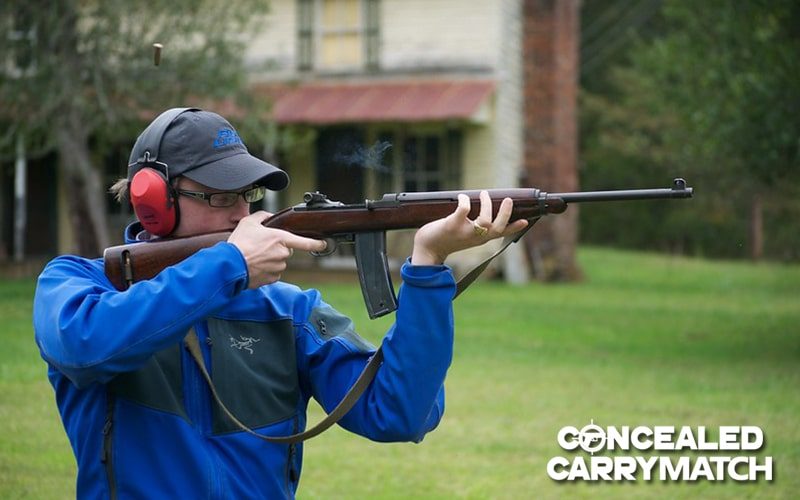
Ballistic Terminal
At long-range shooting distances, the 6.5 Grendel generates significantly higher ballistic. The difference is narrowed down when switching to the short barrels.
At a medium distance, a hunter with 6.8 cartridges can easily take down prey within a precise shot. To maximize the superior ballistic, you should use the hand loads with 6.8 SPC.
| Ballistic Characteristic | 6.5 Grendel | 6.8 SPC |
|---|---|---|
| Bullet Diameter | 0.264 in (6.71 mm) | 0.277 in (7.03 mm) |
| Case Length | 1.52 in (38.6 mm) | 1.68 in (42.7 mm) |
| Overall Length | 2.26 in (57.4 mm) | 2.26 in (57.4 mm) |
| Bullet Weight | 90-130 grains | 85-120 grains |
| Muzzle Velocity | 2200-2700 fps | 2300-2800 fps |
| Muzzle Energy | 1500-2200 ft-lbs | 1500-1900 ft-lbs |
| Trajectory at 300 yds (100 yd zero) | -5.5 to -13.7 in | -6.8 to -15.6 in |
Price And Availability
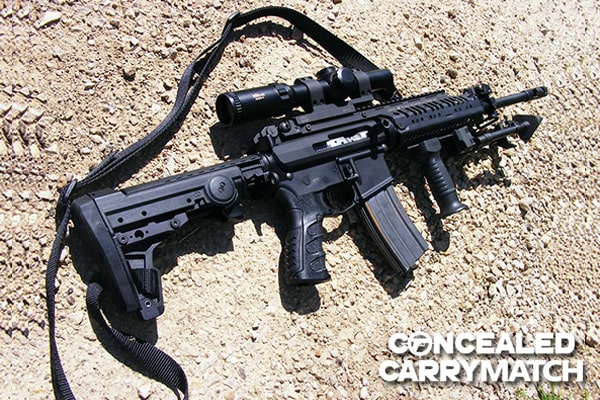
In general, the 6.8 cartridge is more expensive than the 6.5 Grendel, about three times higher. Therefore the 6.5 Grendel is a more budget-friendly option for the new shooters.
Speaking of availability, the 6.5 Grendel is slightly more popular. It is usable for various semi-auto guns and long-range rifles. Meanwhile, the options for the 6.8 SPC are more limited.
If you want a more in-depth comparison and real-life demonstration, consider watching the video below.
Final Verdict
Ultimately, the decision between 6.8 SPC vs 6.5 Grendel comes down to personal preference and comfortability with recoil and what type of target is intended to be shot. Both cartridges are trending in the market and can fully satisfy their specific needs.
The 6.8 SPC provides flat trajectories in a lightweight platform while the 6.5 Grendel has higher velocities and generally better accuracy potential with heavier bullets at longer distances.
For those looking for optimal performance or want to compete in competitions, it’s recommended that ammunition selection be chosen carefully as not all types match every gun, so one should always research to make sure they are getting the best experience possible.
So, whether you need an excellent self-defense cartridge or something a bit more tactical, both cartridges have some great options within the range of loads available from factory manufactured ammo and handloaded ammo alike!
We hope this article was helpful and if you’d like to learn more about firearms and related topics, be sure to follow us at weaponspecialist.org for even more resources!
Last Updated on November 21, 2023 by


